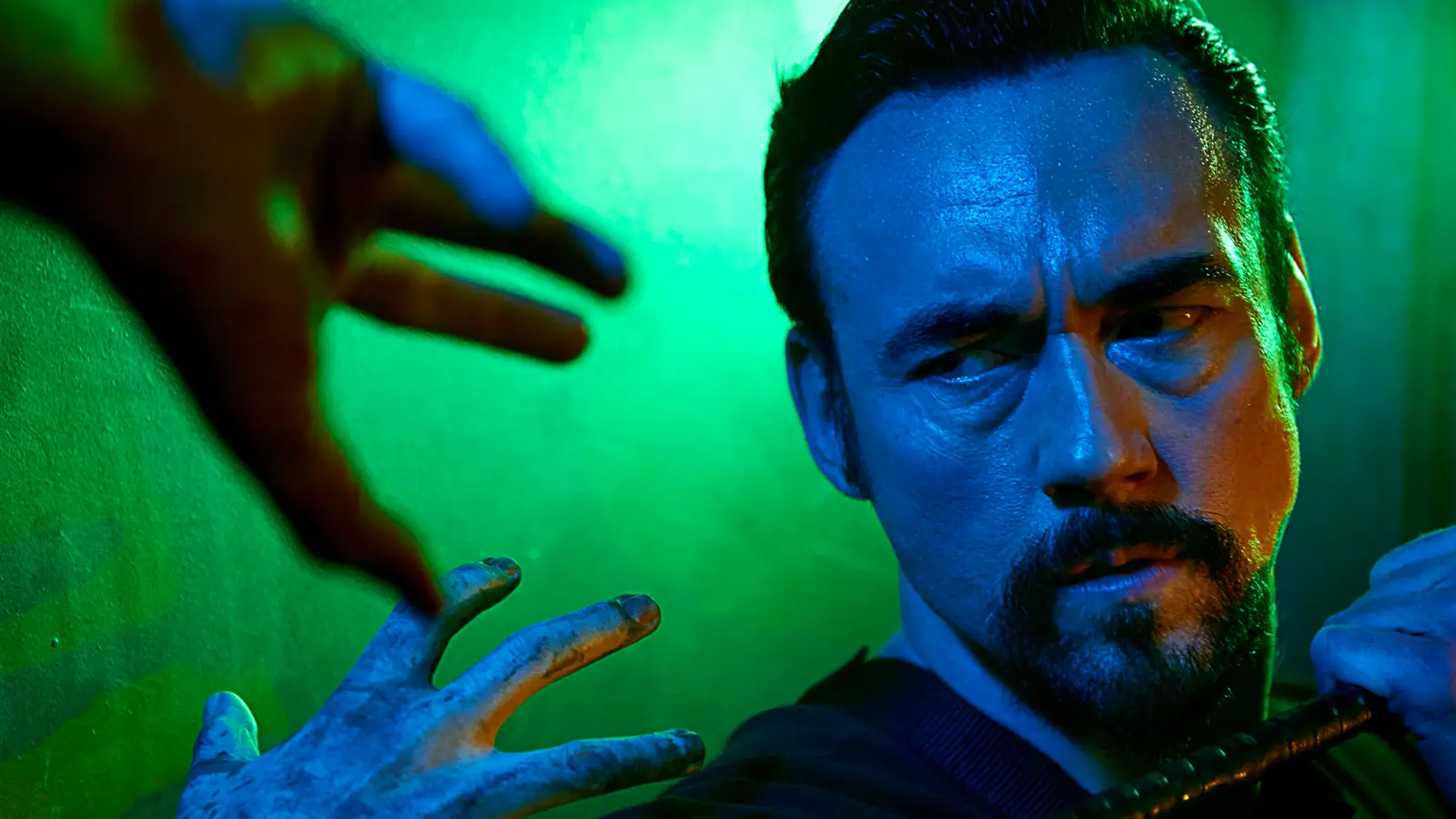
The best horror TV shows don’t just terrify viewers – they practically demand multiple viewings. While any great series benefits from a rewatch, the horror genre is uniquely suited to repeat experiences. The first viewing is often pure adrenaline, packed with dread, jump scares, and shocking visuals that keep audiences on edge and too rattled to notice every detail.
However, the brilliance of many of the best horror TV shows only truly comes into focus the second time around. Beneath the blood-curdling frights and nightmarish imagery, you’ll often find masterful storytelling, haunting performances, and thematic explorations that reward closer inspection. A rewatch peels back the layers and reveals artistry that fear may have hidden on the first run.
Some horror TV shows take this to the extreme, practically requiring more than one viewing to grasp their full impact. These shows are designed to surprise, unsettle, and then challenge you to revisit them – transforming the second watch into one of the most rewarding experiences small-screen horror has to offer.
Channel Zero (2016-2018)
The Artistry Of Channel Zero’s Horror Only Reveals Itself On Rewatch
At first glance, Channel Zero is pure nightmare fuel. Each season adapts an internet-born creepypasta into a chilling anthology story, where visuals and atmosphere are often more terrifying than the actual plot. The first time through, most viewers are swept away by its surreal imagery – like the tooth-child in season 1 or the dreamlike corridors in season 2.
However, once the initial fear has worn off, a rewatch reveals just how meticulously crafted Channel Zero truly is. From the dreamlike cinematography to the use of color and sound design, every frame is designed to heighten unease.
What makes Channel Zero truly shine is how artistry and terror blend together. The scares hook you first, but the craft keeps you coming back. Creator Nick Antosca layers in subtle details that slip past during a fear-driven first viewing, but they’re impossible to miss on the second run.
Bates Motel (2013-2017)
The Intricate Layers Of Bates Motel Make It A Richer Experience The Second Time
Bates Motel begins as a modern prequel to Alfred Hitchcock’s Psycho, following Norma Bates (Vera Farmiga) and her son Norman (Freddie Highmore) as they slowly spiral into their infamous destinies. The first viewing is usually spent marveling at the escalating suspense and Farmiga’s mesmerizing performance.
On a second watch, though, the richness of the show’s tapestry becomes clearer. Small character moments and throwaway lines take on new meaning, especially once the series’ trajectory toward Psycho’s ending is known. The subtleties in Norman’s behavior (both endearing and unsettling) gain added weight when you know what’s coming.
This layering makes Bates Motel one of the rare horror TV shows that grows more impressive with each viewing. It’s not just about Norman’s inevitable transformation but about the dozens of smaller story choices that build toward it.
Slasher (2016-2023)
Slasher Becomes Even Better When You Know Who The Killer Is
The anthology horror series Slasher takes its cues from classic slasher movies, with each season introducing a new masked killer and a fresh set of victims. On the first watch, it’s easy to get swept up in the gruesome murders and suspenseful guessing game surrounding the identity of the titular slasher.
Revisiting any season of Slasher once the killer’s identity is known transforms the experience. Suddenly, the foreshadowing leaps out: throwaway glances, cryptic comments, and seemingly innocent actions that were hiding in plain sight. What seemed like random character moments often turn out to be carefully planted clues pointing toward the eventual reveal.
That dual-layer – thrills for first-time viewers, precision for repeat ones – is what makes Slasher such a rewatchable gem. Knowing the answers only makes the puzzle more satisfying. There are many anthology horror TV shows out there, but few have made the format as ripe for multiple viewings as Slasher managed to.
The Strain (2014-2017)
Guillermo Del Toro’s Story Only Truly Shines Once The Spectacle Is Out Of The Way
The Strain, created by Guillermo del Toro and Chuck Hogan, initially overwhelms with sheer spectacle. From its terrifying vampire design to sprawling citywide set pieces, the series is a sensory overload on a first watch. Most viewers get lost in the scope of the apocalypse and the constant stream of monstrous imagery.
It’s only upon a second viewing that viewers can step back and focus on the narrative details. Dr. Ephraim Goodweather (Corey Stoll) and Setrakian (David Bradley) aren’t just monster fighters – their arcs are deeply tragic, and The Strain’s commentary on corruption, power, and survival becomes far more apparent without the distraction of constant visual shocks.
The smaller touches, such as subtle callbacks, thematic parallels, and character motivations, add unexpected depth to the story of The Strain. What starts as an overwhelming horror show turns into a carefully layered epic when rewatched.
Hannibal (2013-2015)
Hannibal’s Nuance And Symbolism Demand Multiple Viewings
Bryan Fuller’s Hannibal is one of the most visually and thematically ambitious horror TV shows ever made. Mads Mikkelsen’s Hannibal Lecter and Hugh Dancy’s Will Graham engage in a psychological chess match drenched in surreal imagery and gothic horror. The first watch often leaves audiences dazzled and disturbed by the sheer intensity of it all.
This intensity is why Hannibal is a series that practically requires a second watch. The layers of subtext, coded language, and artistic symbolism are overwhelming at first, but with hindsight, their meaning becomes clearer.
The subtle shifts in Hannibal and Will’s relationship – mentor, adversary, mirror – reward patient rewatching. The result is a series that is just as frightening the second time, but infinitely richer. Fear may dominate the first run of Hannibal, but appreciation dominates the second.
The Fall Of The House Of Usher (2023)
Mike Flanagan Packed House Of Usher With Easter Eggs You’ll Only Spot Later
Mike Flanagan’s Netflix horror The Fall Of The House Of Usher is loaded with spectacle, grotesque imagery, and a high body count, making it a thrilling first watch. On a rewatch, however, it becomes clear the true brilliance lies in the details.
Every episode is dripping with nods to Edgar Allan Poe’s stories, from subtle dialogue references to entire plot parallels. Beyond the literary Easter eggs, performances take on new meaning once you know how the Usher family’s story ends. Bruce Greenwood’s Roderick and Carla Gugino’s Verna become even more fascinating when their every look and line is reconsidered through hindsight.
The second viewing of The Fall Of The House Of Usher transforms the show from a gothic thrill ride into an intricate puzzle box. It’s horror layered with history, literature, and artistry. While every Mike Flanagan Netflix show improves on a rewatch, none are transformed quite like House Of Usher.
Evil (2021-2024)
Evil’s Twists And Turns Only Make Sense Once You Rewatch The Whole Story
At first, Evil works as a blend of supernatural scares and procedural investigation. Kristen Bouchard (Katja Herbers), David Acosta (Mike Colter), and Ben Shakir (Aasif Mandvi) face cases that blur the line between demonic forces and psychological phenomena. On first viewing, the twists and frights keep the pace relentless.
Yet once the full story is revealed, rewatching Evil brings out the careful design that makes the show such a masterpiece. Subplots that once seemed disconnected slot into place with new context. Dialogue that felt throwaway on first viewing becomes foreshadowing.
Evil is a show that thrives on deception, but the reward comes when you circle back and see the seeds planted from the very start. Even the ambiguous moments gain extra power once you know where the narrative is ultimately heading, making Evil one of the most rewatchable horror TV shows of all time.
Kingdom (2019-2020)
Kingdom’s Political Intrigue Is Brought To The Fore On A Second Watch
Netflix’s Kingdom begins as a period zombie thriller set in Korea’s Joseon dynasty, but it quickly reveals itself as a layered political drama. On first watch, most viewers are glued to the gruesome zombie set pieces and shocking twists. The palace intrigue can feel overwhelming when combined with the relentless horror.
On a second run, however, the politics become just as captivating as the undead carnage. Characters who seemed minor reveal themselves as vital to the kingdom’s fate. Red herrings, betrayals, and shocking reveals are easier to track when you’re not just bracing for the next zombie swarm.



